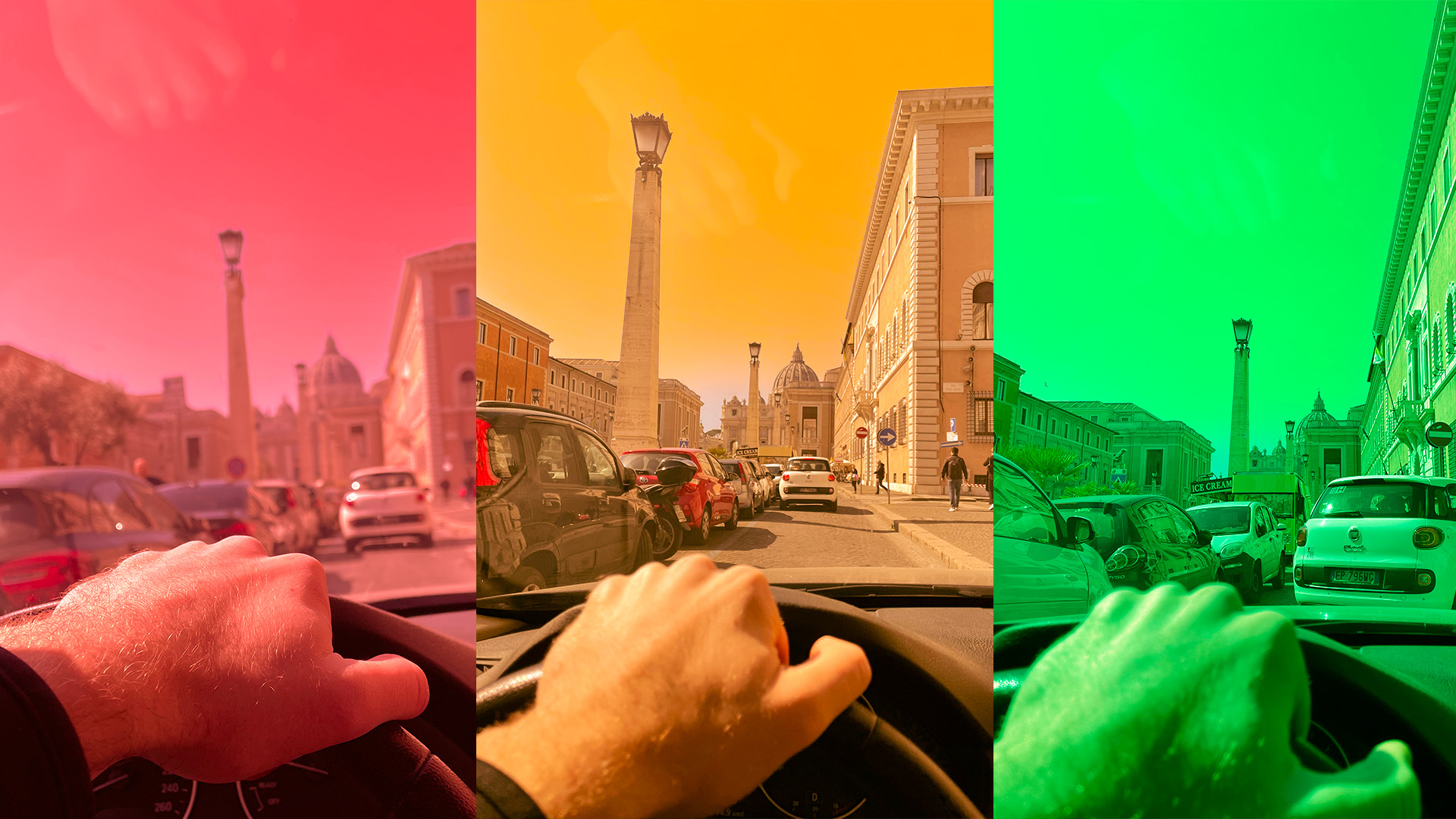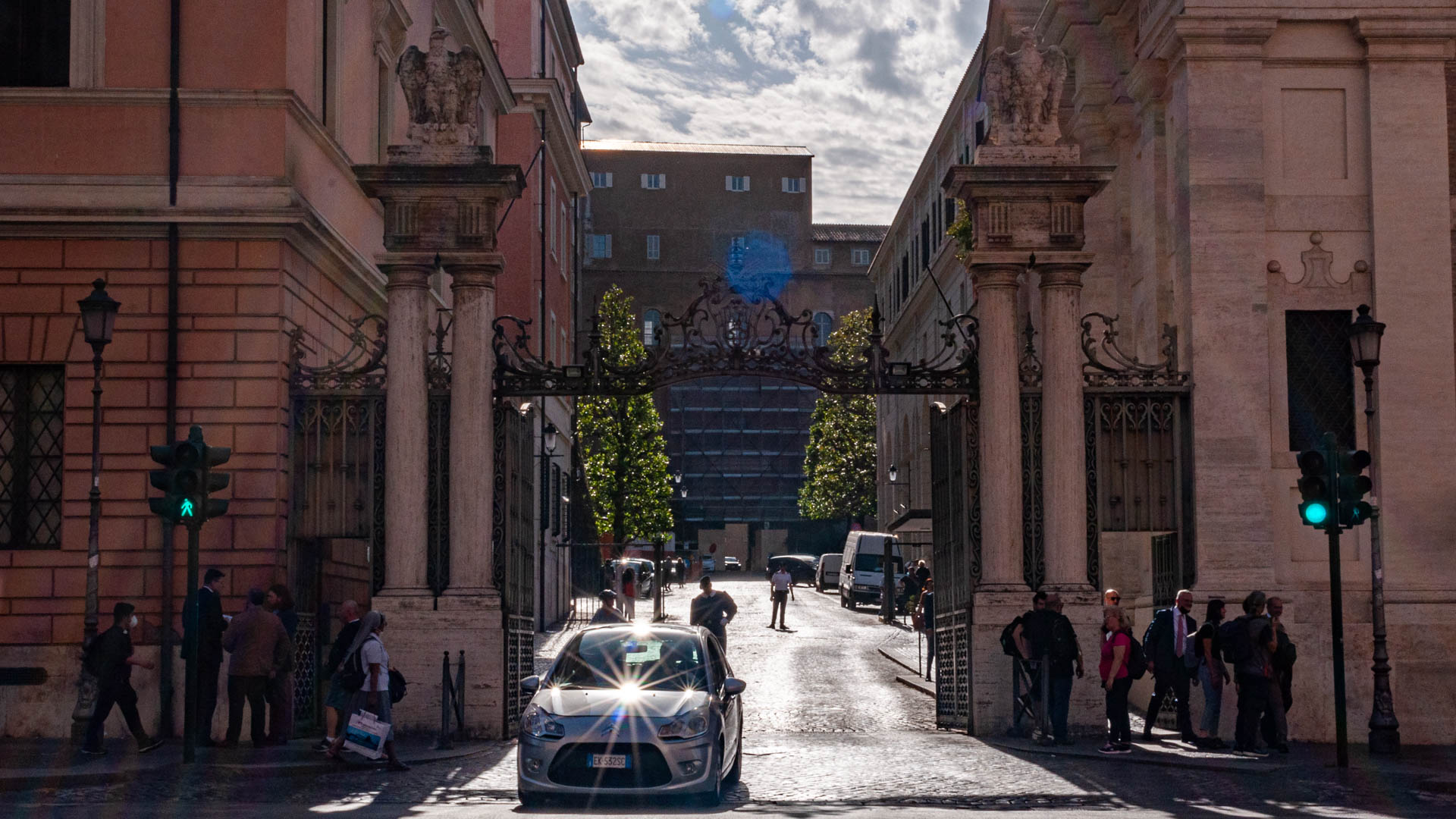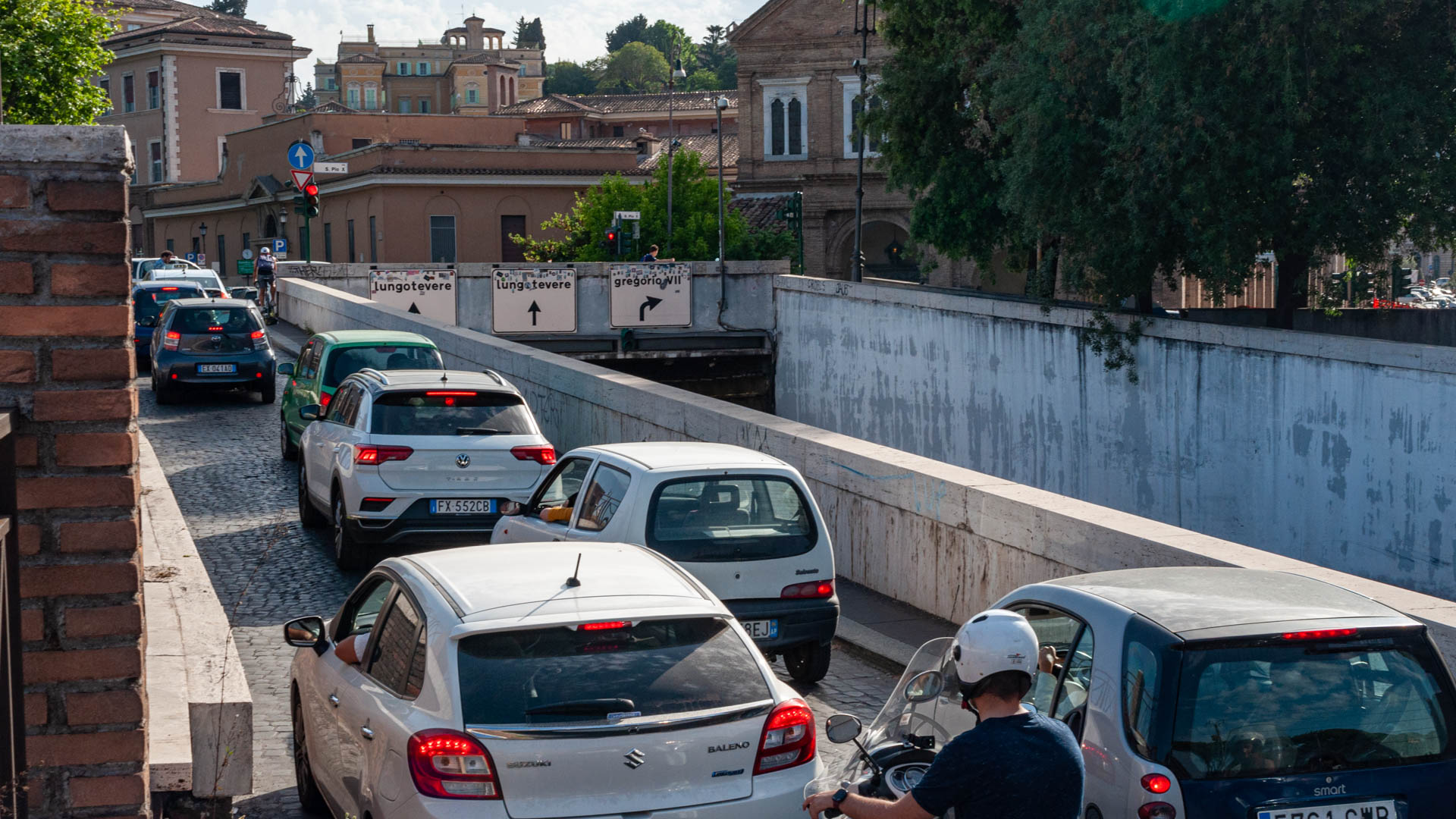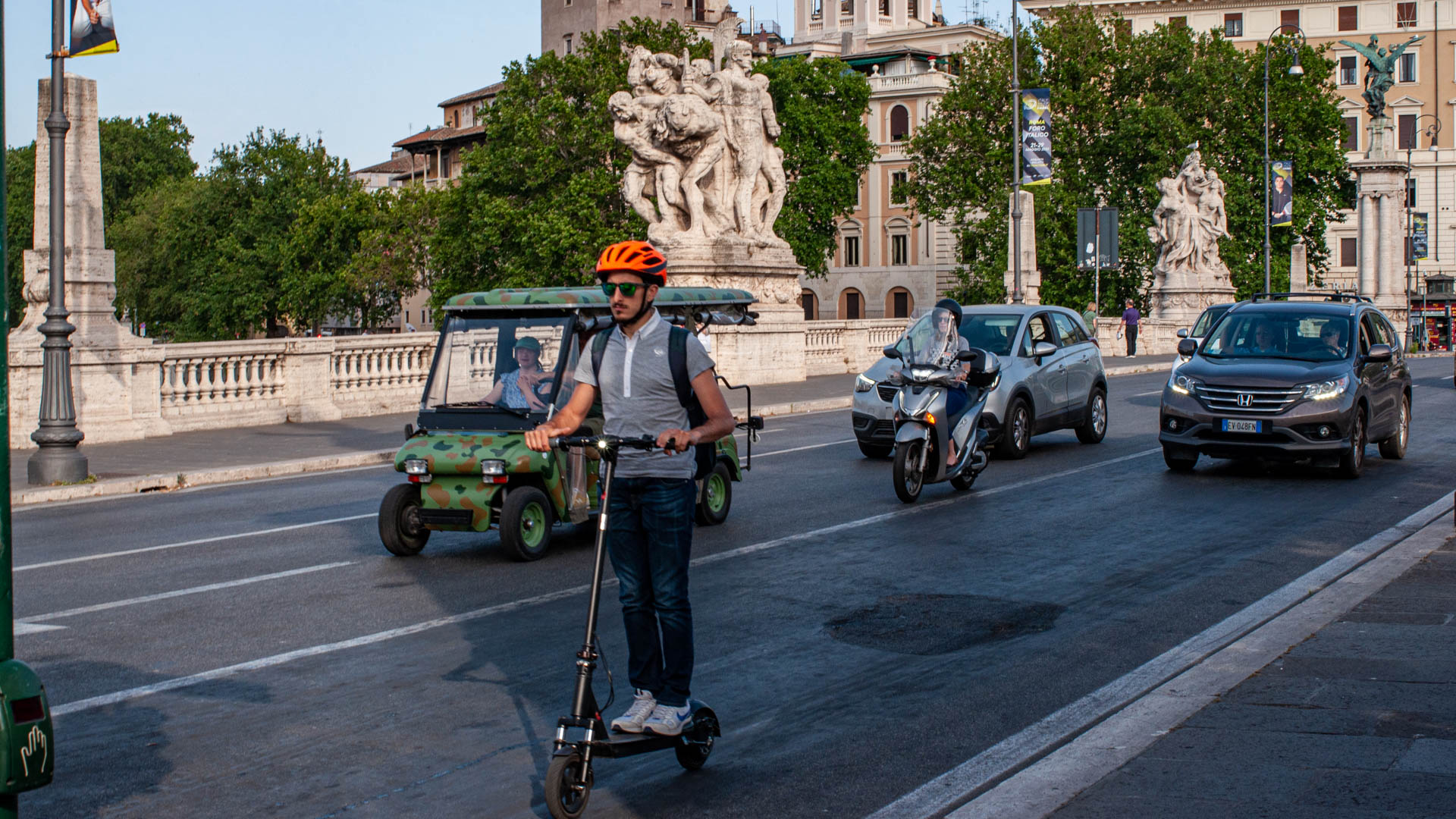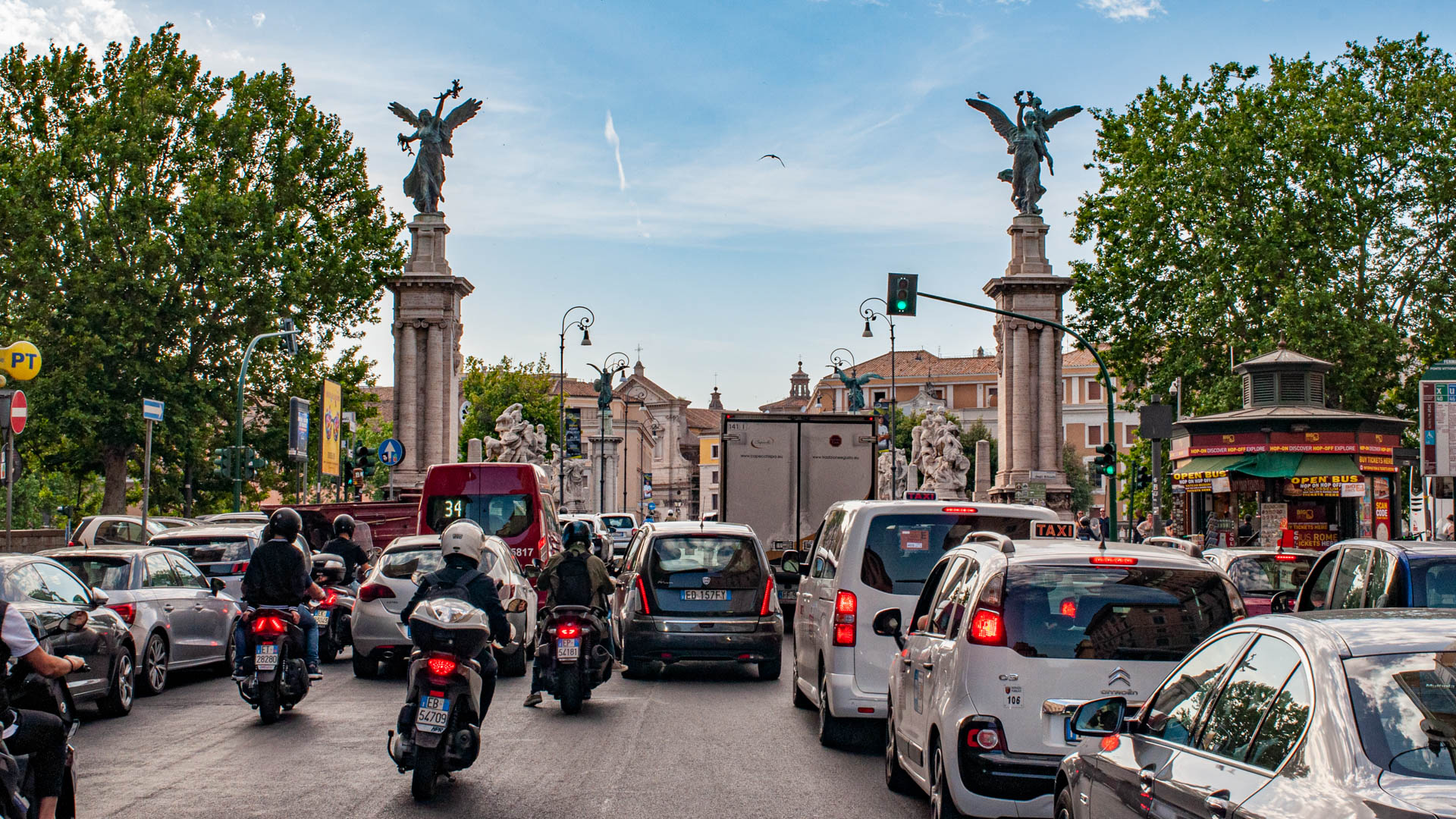Driving in Rome
— Jake Kutina
I remember when I first arrived in Rome I was in a taxi from the airport to the city center. I experienced the roads for the first time from the backseat and I said to myself, “This is complete chaos!” The roads are filled with buses, taxis, cars, motorcycles, mopeds, scooters, bikes, and trams. Motorini zipping in and out of traffic, finding any opportunity to get around the car in front of them. Buses stopping on the side of the road to pick up riders. Taxis driving around popular areas. Everyone else driving to and from work. A town of 4 million people plus tourists equals congested roadways. Simple.
One of the most driven roads and one I take often is the Lungotevere. The Lungotevere is a road that runs along the River Tiber. The River Tiber comes from the Apennine Mountains in north central Italy , runs through the heart of Rome, and deposits into the Tyrrhenian Sea. It offers the fastest way to get from the north end of town to the south end.
As a volunteer here at Sant’Anselmo, I serve primarily as the driver for the Abbot Primate. He has many meetings in the Vatican and the Lungotevere is the most efficient way to get there. I take it for about 15 minutes, winding along the river, turn left and I’m right in front of St. Peter’s Square. It’s an easy drive, but since the Lungotevere is one of the most central roads, it means lots of traffic and pedestrians.
As a pedestrian, you can witness the chaos up close. You’ll hear car horns, the sirens of an ambulance or police car, and people yelling from their cars. You’ll notice other tourists waiting patiently at crosswalks and Italians/ locals doing the exact opposite: crossing when they think it’s safe enough. It’s a dangerous game, but the pedestrian always has the right of way. And boy oh boy do Italians take advantage of this right. Obviously at a stoplight you wait for the light to turn green, but there are plenty of places with white lines placed in the middle of the road where there are no stoplights. Anyone who’s lived here for longer than a few weeks catches on to the unwritten rule that you can cross when you want. It’s a weird feeling stepping out in front of a car, but you don’t really think about it. You just, kind of, do it. I can assure you from experience the drivers in Rome are used to stopping for pedestrians. It’s normal to them. It’s also normal for them to spot foreigners. Like I said before, these are the people that are waiting patiently on the sidewalk. When drivers see these people, they hit the gas instead of pumping the brakes. This is why it’s necessary to be the aggressor. Show them you are crossing and you’re doing it NOW.
After 9 months of learning the ins and outs and getting a feel for the flow of traffic, I can assure you that driving in Rome is indeed chaos. But it’s a controlled chaos. There’s more moving parts and things to be aware of on the roads of Rome compared to the roads of a busy city in the states like Minneapolis. But for some reason things run just as smoothly. The unwritten rules of the road seem to be more fluid. People drive fast and seem in a rush, but there’s a general understanding that traffic is inevitable. Waiting for someone to park on the side of the road, watching motorini swerve in and out of lanes during stopped traffic, and getting honked at, are all things people know and accept will happen when they put the keys into the ignition. The chaos is expected, so when something inconvenient happens on the roads it’s trivial. It’s part of everyday life. This is one lesson that I will take back to the states with me. There’s no reason to have road rage. Be like an Italian: honk your horn and get on with your day.
Here are a few other things I’ve caught onto while driving:
- Italians don’t like to wait. You better be attentive at the light because if the light has been green for more than two seconds and you haven’t hit the gas pedal, expect a honk.
- Rush hour is extensive. Rush hour is 6:30-10am, 12:30-1:30pm, and 4:00-8:30pm.
- “Go where there’s space, and don’t look behind you” was a piece of advice I received during my first month here. I didn’t take it 100% seriously, but the general idea of it checks out.
- The motorini own the roads. The motorini encompasses anyone riding on anything with two wheels: motorcycles, mopeds, scooters, bikes. There are more motorini than cars. It’s the biggest adjustment to driving in Rome. They don’t follow the same rules as people with cars. If traffic is stopped, they drive around to the front. They can pass cars in tighter spaces, so you always have to be on the lookout for them.
- A lot of one-ways. Google maps/ street signs helped me navigate one-ways, but especially in close quarters it’s not hard to make a wrong turn.
- Drive in the middle lanes. The outside lanes you have to worry about people backing out/ pulling in to park.
- You won’t need an ice scraper. It hasn’t snowed in Rome for four years!

